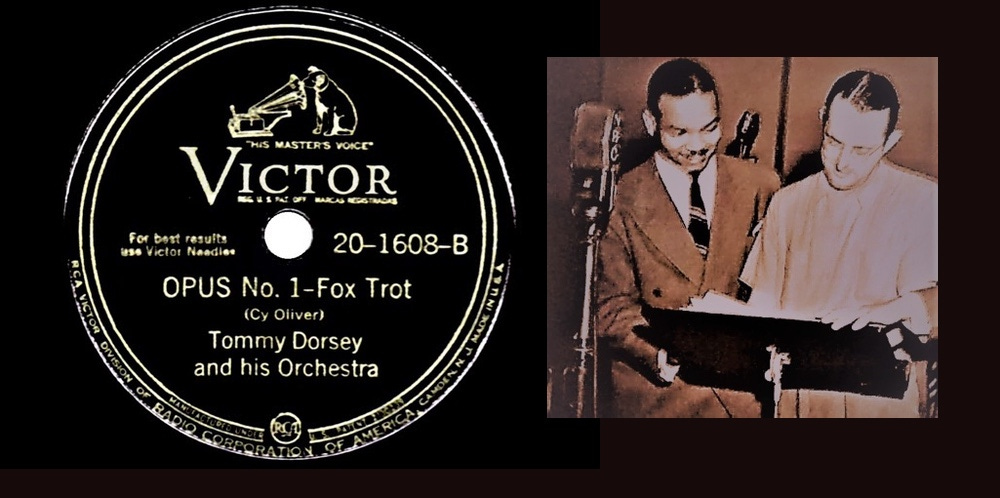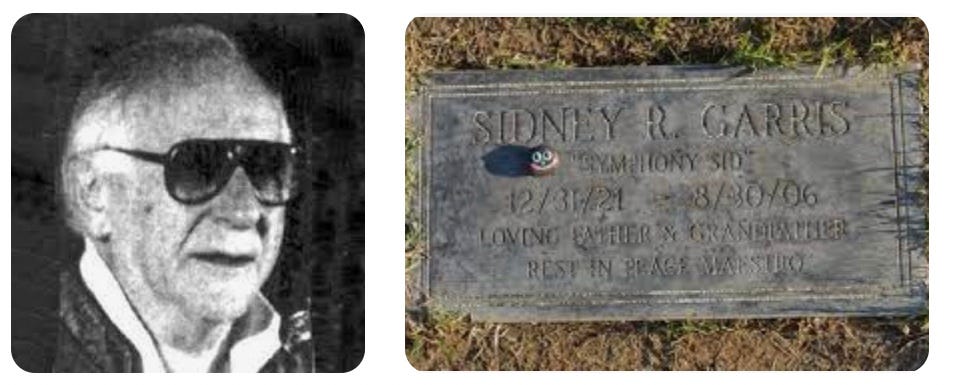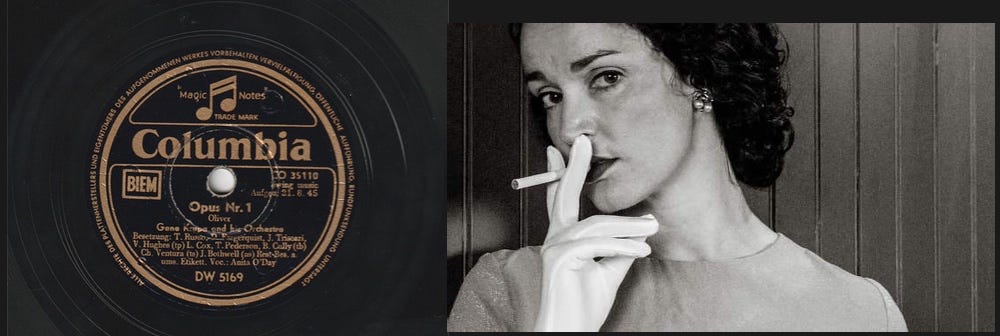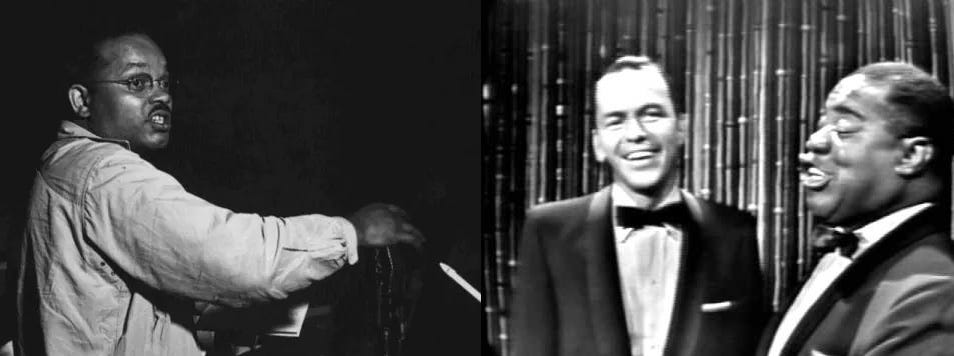Midway through his seven-year stint with the Tommy Dorsey Orchestra, the brilliant arranger/composer Sy Oliver wrote this tune, which became a huge late World War II-era hit for the band.
The chart-topping sensation — which Sy called simply “Opus No. 1” — went on to be radio hits for many other performers as well, from Gene Krupa and Harry James to the Mills Brothers and the Four Freshmen.
Sid Garris and Those Sassy Lyrics
Largely responsible for the song’s success was Sid Garris’s work in creating those playful words.
His lyrics lays out the songwriter’s perennial dilemma: trying to think of a name for a catchy melody he has created, hoping to hook a famous crooner into performing it.
I’m racking my brains to think of a name
To give to this tune so Perry can croon
And maybe old Bing will give it a fling
And that’ll start everyone humming the thing …
Meet Sid
Born in New York City in 1921, Garris was a violinist by training, performing with the Philadelphia Orchestra and later with the Dayton, Ohio, Philharmonic, and while he created some of the cheekiest lyrics of the late swing era, his music career ultimately didn’t involve performing.
The late 1940s and early 1950s found Garris working as a jazz disc jockey in Ohio (Dayton and Cleveland), where he was known as "Symphony Sid."
Then in 1953 he relocated to the West Coast where he became a much-sought-after entertainment executive, managing The Four Freshmen, Ray Anthony and Stan Kenton and, then in the 1960s, The New Christy Minstrels, Anthony Quinn, Robert Culp and Jose Feliciano.
Anita O’Day Rocks It
But back to that song, Sy Oliver’s employer, Tommy Dorsey, was the first to put “Opus One” on disc, recording it as an instrumental on Nov. 14, 1944, but the signature vocal version was Anita O’Day’s rendition recorded the following August.
That was an all-star session. Gene Krupa led the big band from behind his drums. Trumpeter Roy Eldridge accented Anita’s vocals as the guest soloist. Quincy Jones made the arrangement.
Sy Oliver After ‘Opus One’
A year after “Opus One” was a hit for Anita and Q, Roy and Gene, Sy Oliver left the Dorsey band to begin work as a freelance arranger and as music director for Decca Records.
In June 1950, Sy Oliver and his Orchestra recorded the first American version of "C'est si Bon" and "La Vie en Rose" for Louis Armstrong. Then a decade later, some of his career’s most successful arrangements were for the 1961 Frank Sinatra album, I Remember Tommy, a combined tribute to their former boss, Dorsey.
In 1974, Sy began nightly shows with a small band at New York’s Rainbow Room, a gig that continued for the next 10 years before he retired in 1984.
Meanwhile, his great song — that magical first opus — lives on and on.
Our Take on the Tune
It was the end of a fun evening at the Bowen house, but nobody was quite ready to quit yet.
Jack started padding a sweet swing rhythm on the house bongos and Randy jumped in with a bass line that fits it to a T. Charlie got the chords going, just as Danny flew in with that cool melody over Sam’s smooth harmonica fills.





















Share this post